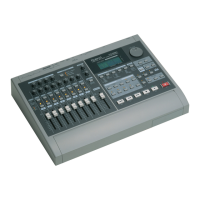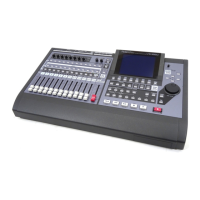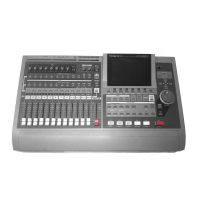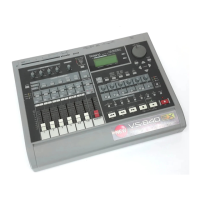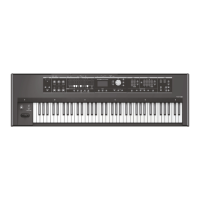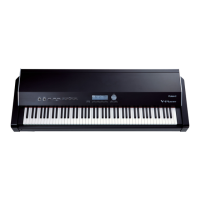26
Algorithm List
Delay
Delay is a feature to add a delayed sound to the direct sound in order to add thickness to the sound or to yield a special effect.
fig.08-08
Parameter (full name) Setting Function
Delay:Adds a delayed sound to the direct sound, adding depth to the sound or creating special effects.
Sw (Switch) On, Off Turns the delay on or off.
Time (Delay Time) 0–1200 ms Sets the time from direct sound until when the delay sound is heard. *1
Shift (Delay Shift) L1200–0–R1200 ms Sets the delay time difference between the right and left delay sounds.
Lch FeedbackLvl (Lch Feedback Level) -100–100 Sets the amount of the left-side delay should be returned to the delay input.
Rch FeedbackLvl (Rch Feedback Level) -100–100 Sets the amount of the right-side delay should be returned to the delay input.
LF Damp Gain (LF-Damp Gain) -36–0 dB Sets the degree of attenuation in the low frequency band for the delay sound fed back.
LF Damp Freq (LF-Damp Frequency) 50–4000 Hz Sets the frequency at which attenuation in the low frequency band starts to the delay sound
fed back.
HF Damp Gain (HF-Damp Gain) -36–0 dB Sets the degree of attenuation in the High frequency band for the delay sound fed back.
HF Damp Freq (HF-Damp Frequency) 1.0–20.0 kHz Sets the frequency at which attenuation in the High frequency band starts to the delay sound
fed back.
Lch FXLvl (Lch Effect Level) -100–100 Sets the volume for the left-side delay sound.
Rch FXLvl (Rch Effect Level) -100–100 Sets the volume for the right-side delay sound.
DirLvl (Direct Level) -100–100 Sets the volume of the direct sound.
EQ (Equalizer)
Sw (Switch) On, Off Turns the equalizer on or off.
Low Gain (Low Gain) -12– +12 dB Sets the boost/cut amount in the low frequency band.
Low Freq (Low Frequency) 20 - 2000 Hz Sets the center frequency in the low frequency band.
Low Q 0.3–10.0 Sets the width of the area around the low frequency that will be affected by the gain settings. *2
Low Type Shlv, Peak Sets the type of the low frequency band equalizer (Shlving type or peaking type).
Mid Gain (Middle Gain) -12– +12 dB Sets the boost/cut amount in the middle frequency band.
Mid Freq (Middle Frequency) 200–8000 Hz Sets the center frequency in the middle frequency band.
Mid Q (Middle Q) 0.3–10.0 Sets the width of the area around the middle frequency that will be affected by the gain settings.
High Gain -12– +12 dB Sets the boost/cut amount in the High frequency band.
High Freq (High Frequency) 1.4–20.0 kHz Sets the center frequency in the High frequency band.
High Q 0.3–10.0 Sets the width of the area around the High frequency that will be affected by the gain settings. *2
Hi Type (High Type) Shlv, Peak Sets the type of the High frequency band equalizer (Shlving type or peaking type).
Level (Output Level) 0–100 Sets the volume after passing through the equalizer.
*1: The sum of the Delay Time (Time) value and the Delay Shift (Shift) value should not exceed the setting range of Delay Time. For example, if Delay Time is set
to 1000 ms, the setting range of Delay Shift is L200 to R200 ms.
*2: If Low Type (Lo Type) or Hi Type (High Type) is set to “Shlv (Shlving Type),” the setting for Lo Q or High Q is invalid.
Input L
Feedback Level Rch
Input R
Delay
Output L
Output R
Direct Level
Direct Level
3BAND EQ
3BAND EQ
Feedback Level Lch
Delay sounds and the spread of sound
As a delay is output in the stereo mode, it sounds from the right and the left sides. These delay sounds can be adjusted by
setting Delay shift (shift). Set it to the value on the L side to cause the left-side delay sound lag behind and to the value on the
R side to cause the right-side delay sound lag behind. Set shift to “0” to make the delay sounds on the both sides
simultaneously. Setting the right and left delay times to different values yields more spreading effect.
* The sum of the Delay Time value and the Delay shift value should not exceed the setting range of Delay Time. For example, if the setting range of Delay
Time is 0 to 1200 ms and Delay Time is set to 1000 ms, the setting range of Delay Shift should be L200 to R200 ms.
Delay repetition
Delay feedback means to return the delay sound to the Delay input. The amount of feedback is set with FBLevel (Feedback
Level). The greater this value becomes, the more times the delay sound is repeated. Setting this level to a negative value
inverts the phase. Excessively large values may cause oscillation.
VS-2000_e.book 26 ページ 2005年12月12日 月曜日 午後4時54分

